Torafu Architects hides dolls' house within a wooden chair
Koichi Suzuno and Alicja Strzyzynska of Torafu Architects have designed a children's seat that splits in half to reveal a dolls' house inside (+ slideshow).
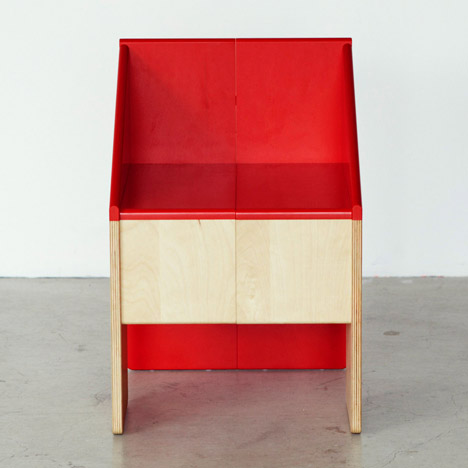
Torafu Architects' Dollhouse chair has a storage compartment hidden in its seat that can double up as a miniature toy home.
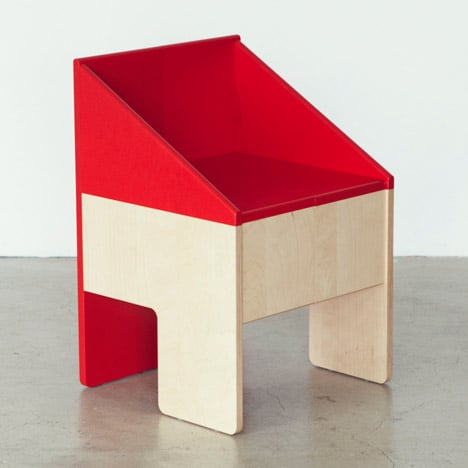
The painted white beech plywood chair splits vertically and hinges open to reveal a small space on each side.
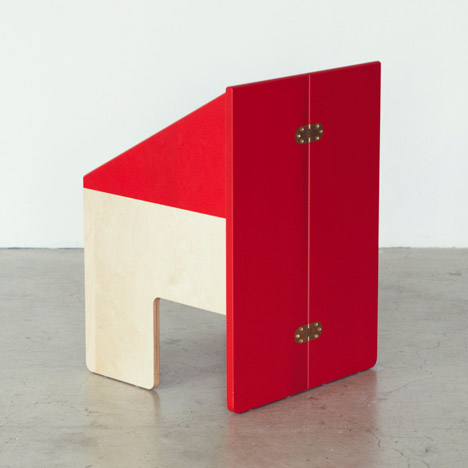
The chair's slanted arms become roof gables, while the divided hollow seat provides four ledges for placing tiny furniture.
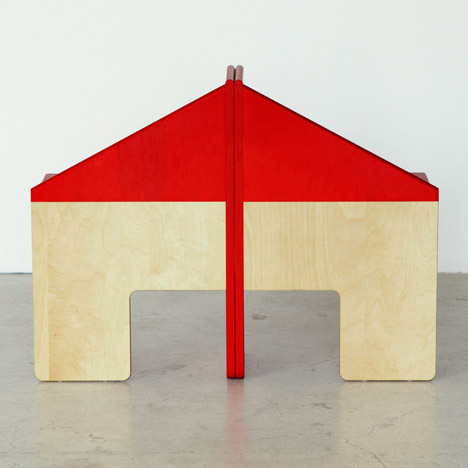
"When split apart down the middle, the chair reveals the shape of a house with a red gable roof," said the designers. "Kids can play with their toys and stow them away with other small objects by shutting the chair closed once playtime is over."
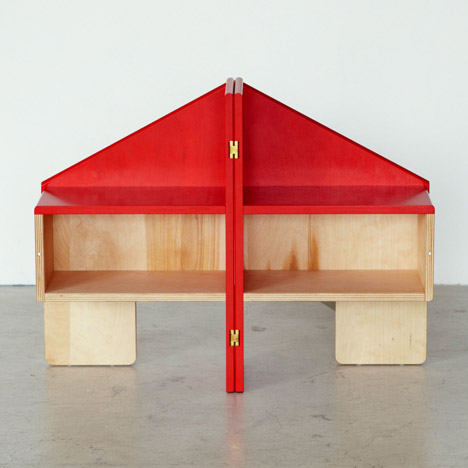
The multifunctional furniture piece can therefore be used for sitting, playing and storing toys.
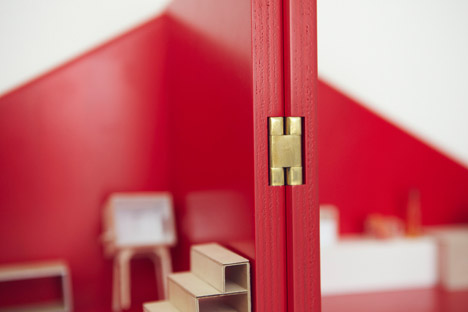
"These three distinct functions make the Dollhouse Chair a very original and versatile piece of furniture," said Torafu Architects.
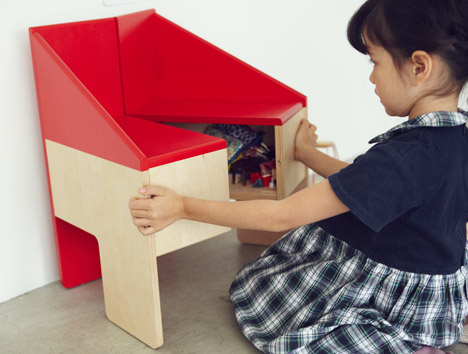
Made by plywood manufacturer Ichiro and available from its online store, the product was designed with longevity in mind.
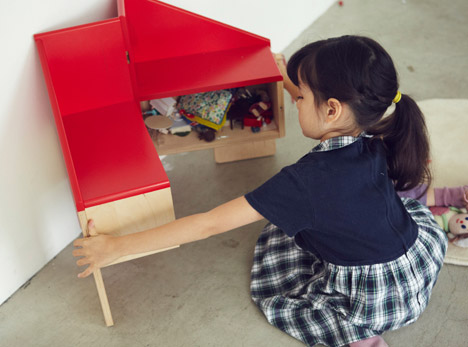
"We hope that people will use this product for a long time," the designers told Dezeen. "It will be a good present for a child, and we are sure they will be very surprised when they find this is a not only chair but also a dolls' house."
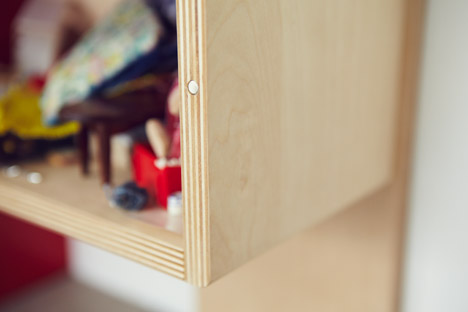
Last month, 19 London-based designers created miniature fantasy rooms for an exhibition at London's Museum of Childhood.

In 2013, architects and designers including Zaha Hadid and David Adjaye designed and constructed dolls' houses that each integrated a feature that would make life easier for a disabled child.